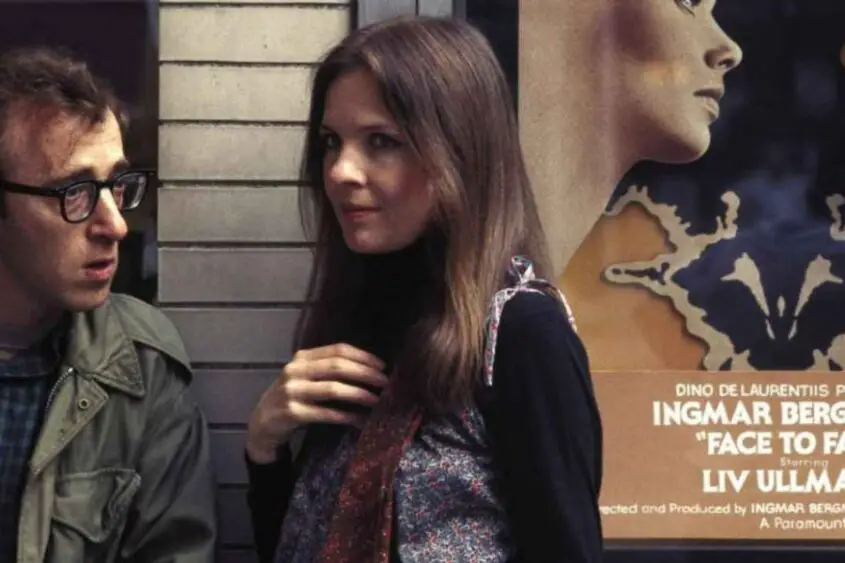In today’s Toast series, we celebrate the late Oscar-winning New Hollywood starlet, Diane Keaton — the woman who redefined what it meant to be a leading lady in Hollywood. Rising to fame in the 1970s with the iconic Annie Hall, she went on to dazzle the world for five decades with her wit, originality, and fearless creative spirit. The world will miss one-of-a-kind Keaton!
She was the queen of “la-dee-da.” Sporting her baggy khakis, big polka-dotted men’s tie, and a spiffy black vest, and a casual black hat, Diane Keaton as the title character Annie in the Oscar-winning Best Picture film Annie Hall (1977) instantly became an emblem of the New Hollywood starlet. Yes, it happened with just one line of dialogue, and with just one image.
Hilariously kooky and effortlessly endearing, Annie was like a breath of fresh air. Everyone loved her. Even better, this character was based on Diane Keaton herself. Cheers to Keaton’s awesome willingness and ability to be so authentic on-screen. Even better still, this movie was semi-autobiographical, and loosely based on her romantic relationship with co-star Woody Allen. Wait, really? Here’s an extra-cheers for an extra-layer of authenticity.
And that’s what made Diane Keaton a perfect representation of gritty, realistic, and provocative New Hollywood. She was a symbol of its unconventionality. Rising to super-stardom with 1977’s Annie Hall, which garnered her a Best Actress Oscar, Keaton became an acting, fashion, and feminist icon who defied previous definitions of the Hollywood starlet.
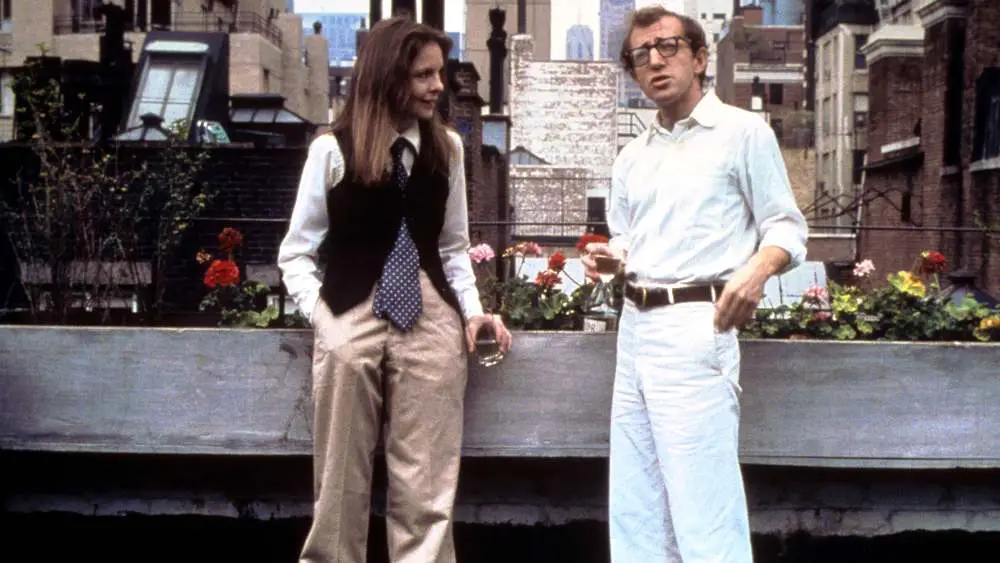
Over the next fifty years, Keaton would forge her own path—on-screen and off—never veering into the cookie-cutter image so easily available to her, and always managing to merge her personal and professional personas. She was her own version of beautiful, and the world enjoyed that beauty right alongside her.
Passing away on October 11 at age 79, the beloved Annie from Annie Hall will always be remembered for her cute black “minstrel show” face soap, and her fear of spiders. Yikes. And Diane Keaton? She’ll be remembered as someone who brought Hollywood, humanity, and women forward in so many ways, and all with her impeccable comedic timing, her searing dramatic chops, her practical intelligence, and that innate, singular sense of style.
All told, Keaton was a true Renaissance woman — an Oscar-winning actress, fashion icon, published photographer, occasional movie and music video director, singer, real estate enthusiast, interior designer, and historical building preserver. Have we covered all bases? But, let’s get back to those glittery movies. Rest in peace to beautiful, unconventional Diane Keaton. Here’s a celebration of your films.
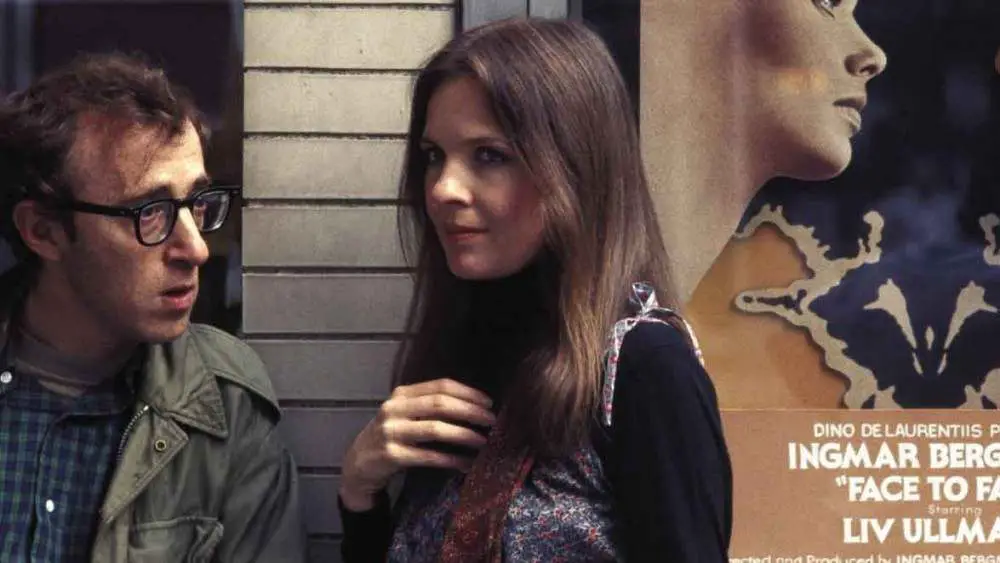
From California Girl to New York City Woman
Keaton starred in some of the most quintessential “New York City” movies of New Hollywood, and indeed of all time. Her list is long. From iconic true crime masterpiece The Godfather (1972) to aforementioned Annie Hall (1977), to another Woody Allen collaboration appropriately called Manhattan (1979), and then 1980s and 1990s classics like Baby Boom (1987) and The First Wives Club (1996) respectively, among others, it’s hard to believe that this icon of not just New Hollywood, but of New York City, was actually a surfin’ beach chick from sunny Los Angeles. Like, totally tubular.
Now legend has it that Diane Keaton didn’t surf as a child. Her interests lied elsewhere, like in acting, photography, and architecture, interests which she would of course develop as an adult. But, here’s still acknowledging the showbiz “intrigue” factor. Could this bastion of New York City “female coolness” really have gotten her start way over on the West Coast, and not on the gritty, romantically crowded, sophisticated, and loud streets of New York City? It’s true.
Diane Keaton was born “Diane Hall” (as in the surname that was used for Annie Hall) on January 5, 1946, in Los Angeles. By many accounts, she had a relatively ordinary childhood. She did some amateur acting in high school, and then studied acting in college on the West Coast for a year before deciding to, you guessed it, move to New York City. And here’s where things got good.
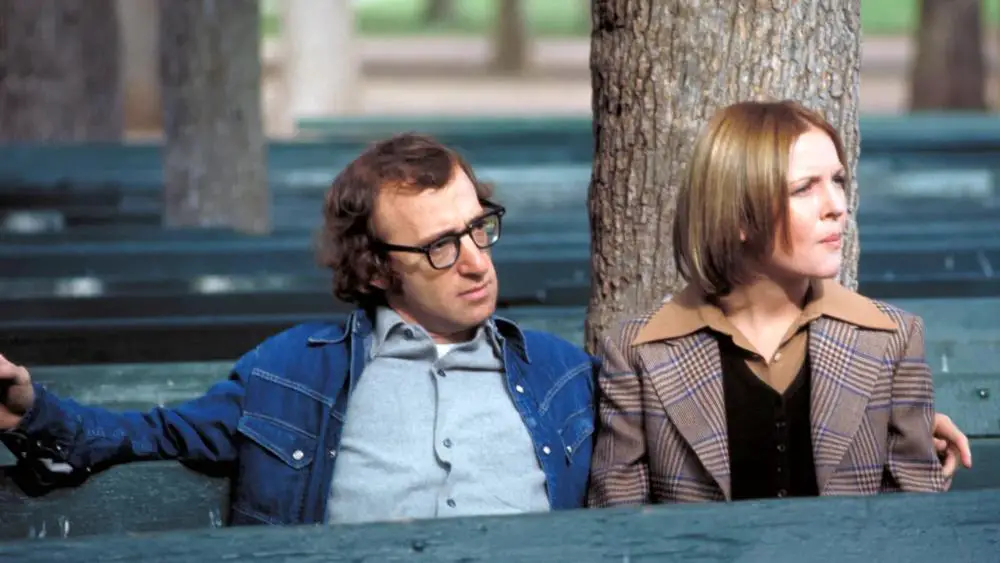
In New York City, Keaton studied at the renowned Neighborhood Playhouse. Then, in 1969, she won a role in the Broadway play called Play It Again, Sam. Written by and starring her future off-screen love, and her future long-time film collaborator Woody Allen, Play It Again, Sam was a perfect launchpad for Keaton. She soon made her film debut in 1970’s Lovers and Other Strangers. Before long, she was starring opposite future New Hollywood icon, and another future off-screen love, Al Pacino, in 1972’s The Godfather.
Keaton as Kay in The Godfather Trilogy
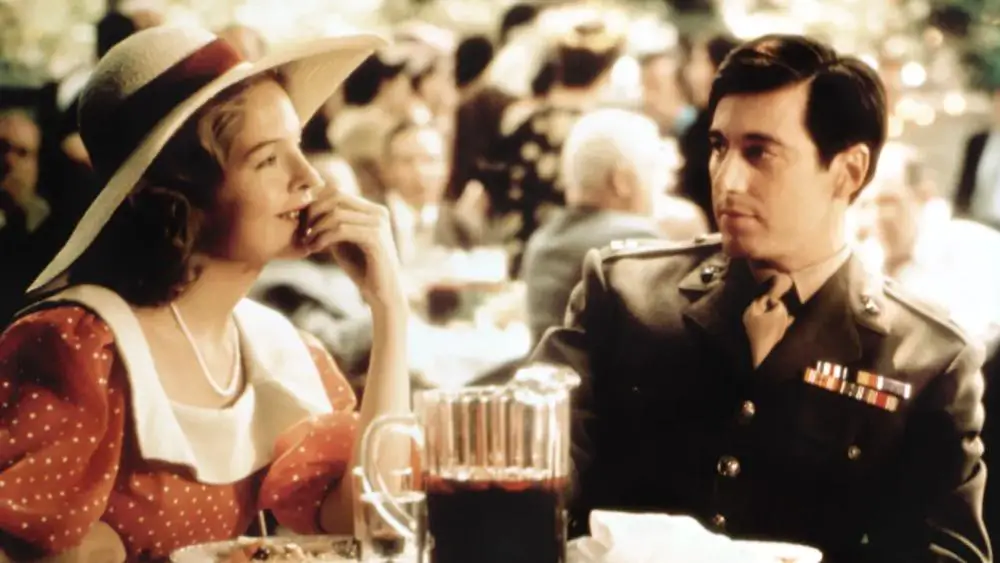
Revered as one of the greatest movies of all time, The Godfather (1972) burst on to the New Hollywood scene with that fabled “cannoli and gun.” A tale of true crime involving Italian-Americans struggling to thrive and find justice in a post-World War II New York City, The Godfather, and its two sequels of The Godfather II (1974) and The Godfather III (1990), is a visceral cinematic experience.
Francis Ford Coppola’s legendary trilogy is brilliant in its emotional rawness, in its family plot-weaves and vendettas, and in its cultural commentary on the Italian immigrant experience. What a riveting, compelling “mob gangster” world then for Kay Adams to step into, with her out-of-town New Hampshire high heels, and sweet pearls and summer hat. Keaton masterfully played the non-Italian girlfriend, Kay Adams, of Al Pacino’s character, future Italian mob-boss Michael Corleone.
In 2023, Keaton cheekily asked Coppola on Instagram, “Why on Earth did you choose me for The Godfather?” Here’s what he had to say:
I chose you, because although you were to play the more straight/vanilla wife, there was something more about you. Deeper, funnier, and very interesting (I was right).
It’s fascinating to watch Keaton transform — from a young, supportive, but confused college girlfriend, to an initially reluctant bride, and finally to a suspicious wife and young mother who, deep down, knows exactly who her dangerous husband is. She has to wrestle with that truth and try to build a life around it.
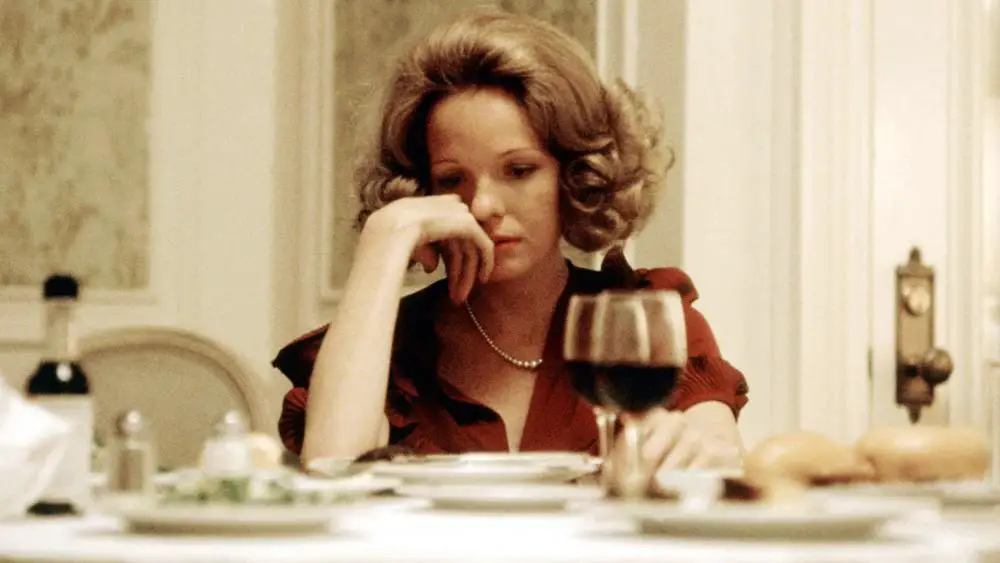
Keaton’s nuance is skillful here, as she inspires the sympathy of the entire audience. Her facial expression in the final scene is downright crushing. Her mob-boss husband, her once sweet non-criminal college boyfriend, is literally closing the door on her, so that he can get back “to business.” Who doesn’t feel the pain of that life? Keaton delivered and how.
Diane Keaton’s Kay Adams was an integral part of The Godfather’s success, and its Best Picture Oscar win. She then was part of Godfather II’s stunning success, and its record-breaking Best Picture Oscar win. It was the first and only “sequel” film to win a Best Picture Oscar, a record held for nearly three decades, until The Lord of the Rings: The Return of the King in 2004.
1970s and 1980s Heyday
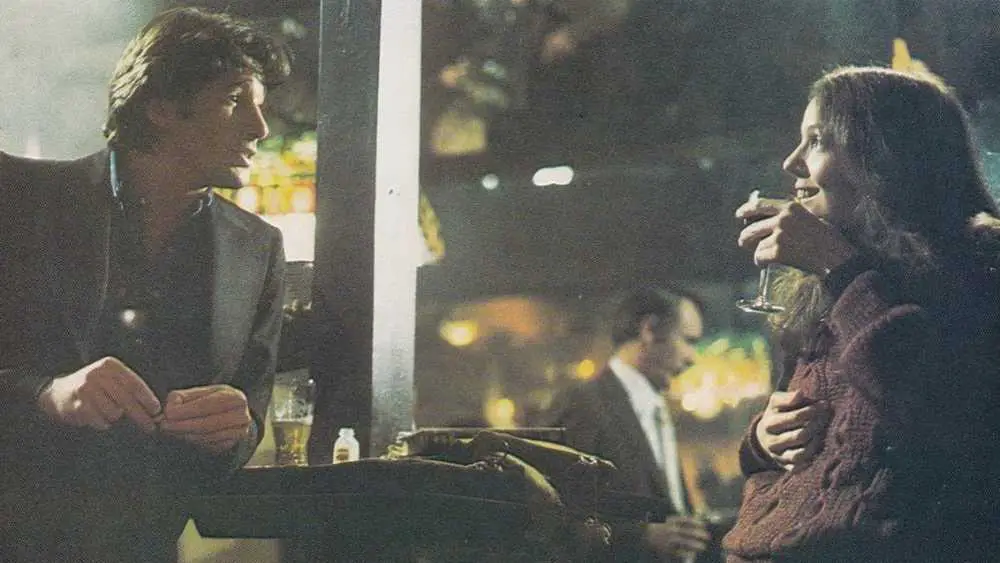
The mid-1970s to mid-1980s were Diane Keaton’s fun New Hollywood heyday. The Godfather films kept her busy and top-tier and her blossoming collaborations with one of New York’s City defining writer-director-actor auteurs, Woody Allen were making her into a true New Hollywood starlet.
Before Annie Hall, they’d done a few movies together, and would do some after, as well. In all, Diane Keaton and Woody Allen starred in eight films together. Theirs was a deliciously dynamic (and New York City neurotic!) duo most certainly worthy of a Saturday night couch-date.
What’s your preference? A dystopian, futuristic comedy called Sleeper (1973)? Or, what about an extra-marital affair in rainy Manhattan in, um, Manhattan (1979)? Bonus, this film also stars newbie Meryl Streep right before she makes it big (the two would become lifelong friends off-screen). Or, who doesn’t love Diane Keaton and Woody Allen’s final collaboration in the black comedy Manhattan Murder Mystery (1993)? It’s a nail-bitingly sharp, rollicking movie.
Outside of The Godfather and Woody Allen films, Keaton also starred in the dark drama Looking for Mr. Goodbar (1977), the Russian-set World War I drama Reds (1981), for which she won her second Oscar nomination, and then the well-respected dramas Mrs. Soffel (1984) and Crimes of the Heart (1986).
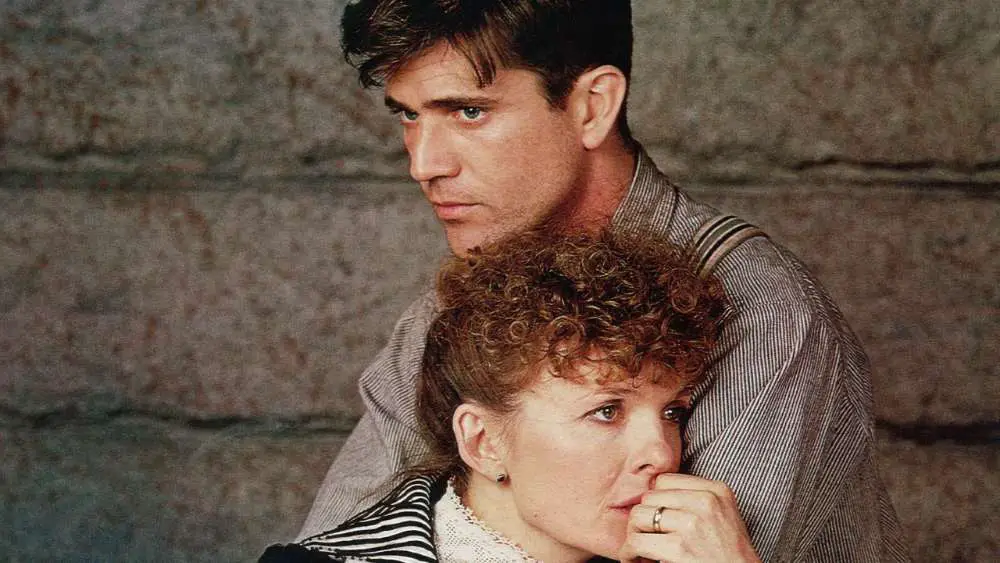
Known for playing that strong, yet vulnerable, and often cutely quirky independent woman who is making her way in a modern New York City, known for re-defining womanhood through her sophisticated “New York City” lens, Keaton was also fully adept at bringing other types of characters to the screen. Her range was commendable, and her roles during these heyday years showed it.
The Cultural Significance of Baby Boom
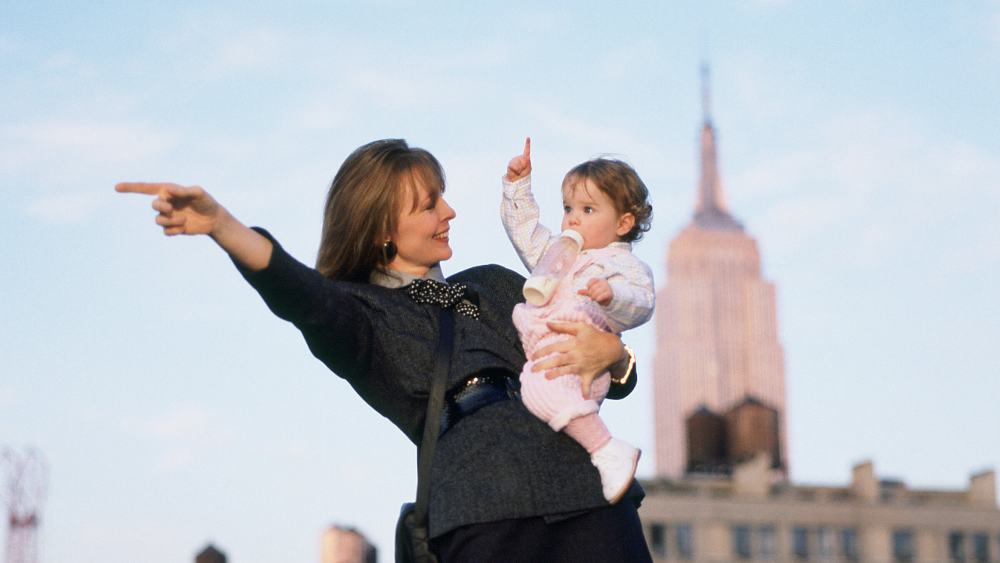
But Keaton returned to her lovably neurotic and sophisticated New York City cinematic roots with the hit Baby Boom (1987). A story about the quintessential “strong, independent woman” of J.C. Wiatt, who is a powerhouse New York City ad management consultant, who then gives up her career to be mom to a sweet little baby girl who she’s “inherited” from an overseas relative (or does she really give up her career?), Baby Boom is a standout in Keaton’s career.
What’s more, like her skill in Annie Hall, Keaton embodies every infinitesimal ounce of her J.C. Wiatt character with such ease. She makes it look so easy! Off-screen, Keaton was a “strong, independent woman” of 41 years old. She was reportedly dating her long-time love from The Godfather, Al Pacino. What Hollywood vavoom! But, they weren’t married, nor would they ever marry. (Fans everywhere, heave a regretful sigh.)
But back to Baby Boom. Like her on-screen character, Diane Keaton, too, was unmarried, childless, and yet wildly successful in her professional life. Thus, progressive women everywhere thanked Keaton for understanding the importance of taking on this role. Keaton was showcasing that there are different viewpoints to life, and that there are different life paths that should be open to females. For women, one dress (or executive power suit!) doesn’t fit all.
Her trademark “character bravery” shines through in Baby Boom, and this movie brought cultural light and weight. It influenced society. This New Hollywood thespian, coming up during those gloriously hard hittin’ rebellious 1970s filmmaking days, was bringing thoughtful substance to a glossy, sometimes silly 1980s popular movie market. Keaton’s beautiful unconventionality that opened people’s hearts and minds was still shining strong.
Millennial Magic
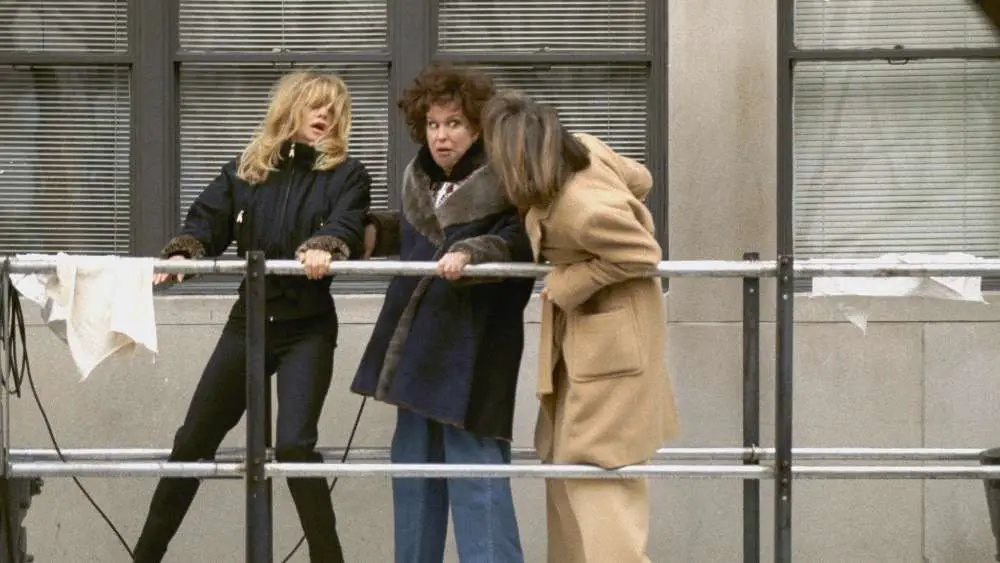
Keaton continued her acting fun throughout the 1990s to the present. Outside of being a muse for iconic filmmaker Woody Allen, Diane Keaton was also a muse for aesthetically “warm and cozy” screenwriter and director Nancy Meyers. First collaborating in Baby Boom, which Nancy Meyers wrote, Keaton then starred in the heartwarming The Father of the Bride (1991) and The Father of the Bride II (1995), both written by Nancy Meyers. Sidebar, this film also saw Keaton teaming up with comedic giants Steve Martin and Martin Short.
She also did The First Wives Club (1996), which was a huge, massive “chick-flick” success. Go Annie, Elise, and Brenda! That would be Diane Keaton, Goldie Hawn, and Bette Midler. These three mega-star actresses light up the screen like the true bona-fide legends that they are. Noteworthy, The First Wives Club is another magical New York City-set film. Watch these ladies take down their cheating husbands in the cleverest and most entertaining of ways. But, is revenge really what they want after all?
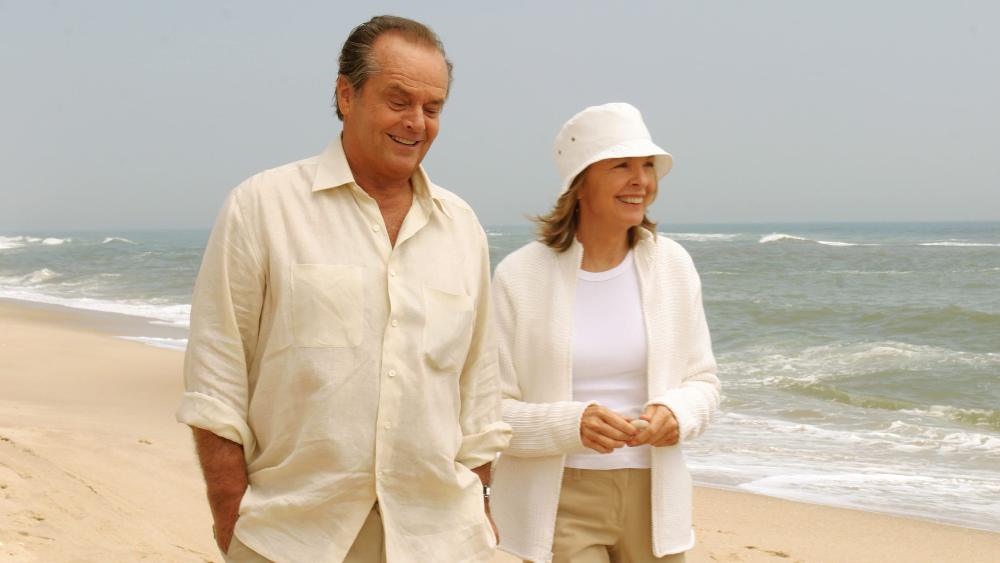
That same year, Keaton starred in the touching tearjerker drama Marvin’s Room (1996), alongside off-screen pal Meryl Streep, and a young, talented up-and-comer Leonardo DiCaprio. She would be nominated for her third Oscar here. Keaton then starred in the romantic comedy hit Something’s Gotta Give (2003), directed by Nancy Meyers, and co-starring fellow New Hollywood icon Jack Nicholson. She was nominated for her fourth and final Oscar.
In more recent years, Keaton was deservedly honored with the AFI Lifetime Achievement Award. Donned in her trademark gender-bending outfit of neutral colors, with a thick belt, and a strong black hat, she was a vision of pristine creative power, who had stood the test of time, and then some. This 2017 event saw her flanked by friends Steve Martin, Martin Short, and Meryl Streep, as she received a thunderous applause from her admiring Tinseltown peers.
Her final films these last few years were 2018’s Book Club and its 2023 sequel Book Club: The Next Chapter. See her laugh it up “literary-style” with co-stars Jane Fonda, Mary Steenburgen, and Candice Bergen. She also starred in the kindhearted “elderly cheerleader” comedy called Poms (2019). A movie about “elderly cheerleaders?” Indeed. (Believe it or not, this frothy-sweet movie is based on a true story.) Her swan song came with Summer Camp (2024).
Diane Keaton seemed unstoppable, which makes her death this month even more difficult. She seemed to have so much left to give. This one-of-a-kind, original actress brought her own off-screen version of herself to the big screen time and time again. She lived each of her roles, breathed them completely, and had us feeling, quite miraculously, that no other actress could’ve played them. They were all her. Simultaneously quirky, soft-hearted, sophisticated, intelligent, strong, and complex, so many of her characters let the world know that the “modern woman” had arrived. She was here, and importantly, she was human.
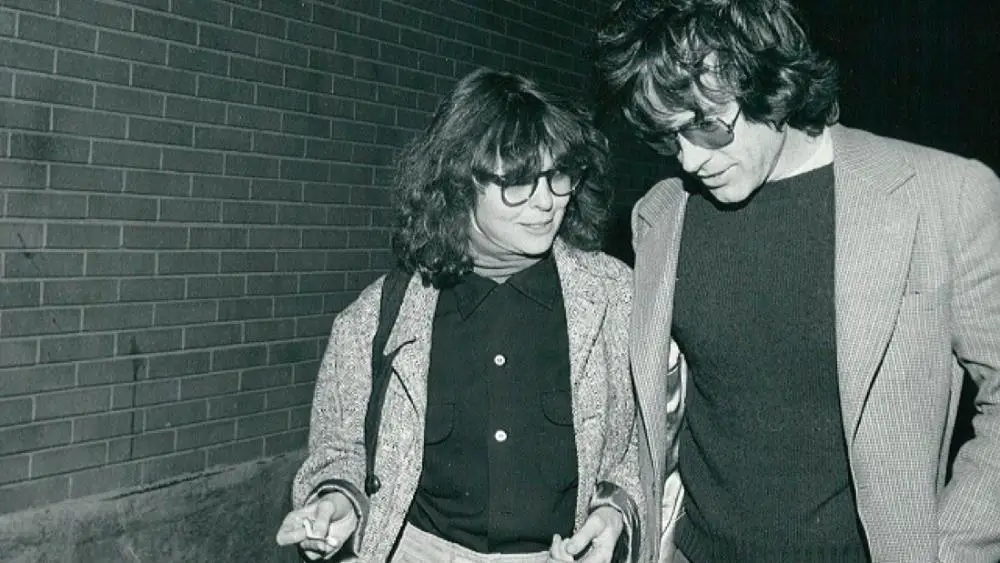
Never marrying, though she dated and was in serious relationships (Al Pacino, Warren Beatty), and never giving birth to children (instead deciding to adopt her two children in her 50s), Diane Keaton proved that the life course for women, and indeed anyone, can be whatever one wants it to be. There’s room for “more,” and for “different,” and at any age.
Flash-back to Diane Keaton’s sweet L’Oreal makeup commercial from the 2000s. What’s that brand slogan again? “Because We’re Worth It.” Diane Keaton, you were most certainly worth it. Thank you for all the cinematic inspiration.

